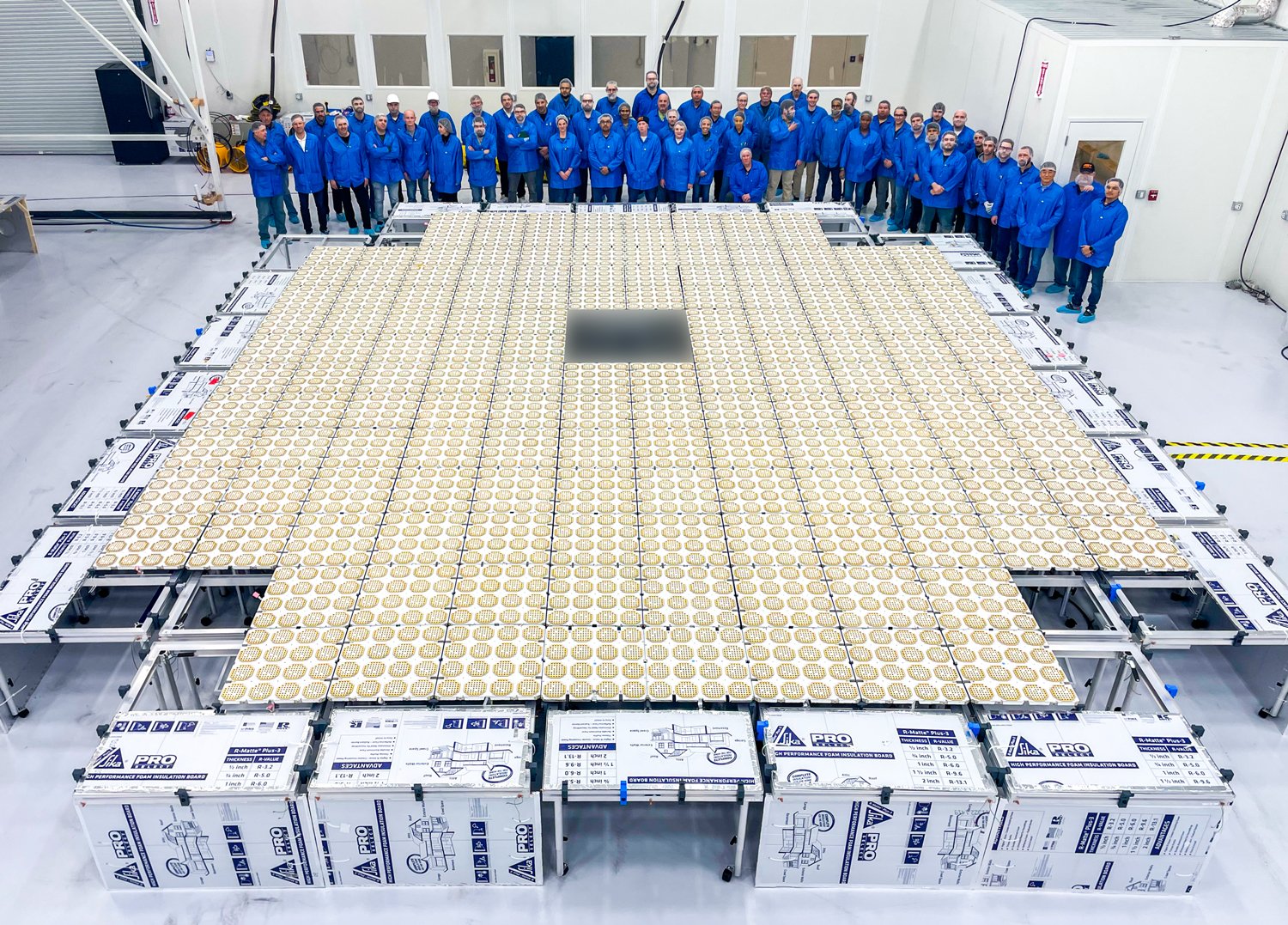TAMPA, Fla. — AST SpaceMobile will start deploying operational satellites in 2023 “even in the event of any complication” with the BlueWalker 3 prototype slated to launch this summer, an executive for the cellphone-compatible broadband constellation said.
The startup’s operational BlueBird satellite program has been “advancing alongside” more than 700 ground tests performed on BlueWalker 3, AST SpaceMobile CEO Abel Avellan said during a May 16 earnings call.
Scott Wisniewski, AST SpaceMobile’s chief strategy officer, said the BlueBird satellites it will start building in-house this year are benefiting from the more than $80 million spent on BlueWalker 3 over several years.
“The BlueWalker 3 program, like any prototype, gave us the opportunity to put our technical solutions into practice, address design-for-manufacturing issues, develop our supplier base, refine internal teams and processes, and conduct on-the-ground testing,” Wisniewski said via email.
While a “significant amount of testing can be done on the ground,” Wisniewski said BlueWalker 3’s upcoming SpaceX Falcon 9 launch remains important for demonstrating technology in low Earth orbit and configuring ground infrastructure.
The 1,500-kilogram BlueWalker 3 prototype, which AST SpaceMobile has said is significantly smaller than BlueBird, has a 64-square-meter phased array antenna designed to unfold in space to communicate with smartphones and other devices at broadband speeds.
AST SpaceMobile secured an experimental license May 2 from the Federal Communications Commission to test BlueWalker 3 services in Hawaii and its home state of Texas.
AST SpaceMobile also expects to test BlueWalker 3 with cellular partners in Japan, Europe, Africa, South America and Asia.
Wisniewski said the company will use BlueWalker 3 to configure ground equipment and software at the gateway level to optimize its planned services.
“We plan to use BlueWalker 3 for this kind of testing and it is an important step to keep the ground network development on schedule with the space network development,” he said.
“Our gateway development efforts have been underway for years, together with customers and vendors, alongside the space network development.”
BlueWalker 3 is slated to launch on a Falcon 9 rocket with other passengers.
AST SpaceMobile also has a contract with SpaceX for launching the first BlueBird in 2023. Their agreement provides a framework for ordering additional launches until the end of 2024, when AST SpaceMobile expects to have deployed 110 satellites to achieve “substantial global” mobile coverage.
AST SpaceMobile remains open to using other launch providers for deploying its constellation, and has said more than one BlueBlird could fly on a heavy-lift vehicle.
Supply chain resilience
Avellan said during the company’s earnings call that AST SpaceMobile is on track to complete a second manufacturing facility in Texas by the end of 2022, which would enable the company to ramp up to producing six satellites a month the following year.
He said AST SpaceMobile is confident its expansion plans will not be caught up in supply chain issues that have delayed other satellite projects.
To lower the company’s exposure to semiconductor shortages, he said AST SpaceMobile has been stocking up on flexible chips that can be reprogrammed after they are manufactured.
Early BlueBirds will leverage these Field Programmable Gate Arrays (FPGAs), Avellan said, while later satellites will migrate to application-specific integrated circuits (ASICs).
“We feel that we can continue to execute on our plan despite any potential supply chain issues,” he added.
AST SpaceMobile has been providing quarterly business updates since becoming a public company April 7, 2021, after merging with a special purpose acquisition company (SPAC) in a deal that raised about $462 million.
AST SpaceMobile said it had about $254 million in cash and cash equivalents as of March 31, after incurring $32.7 million in operating expenses over the previous three months.
About $8.3 million was spent on research and development (R&D) for the three months to March 31, up $8 million from the same period in 2021. Although AST SpaceMobile expects R&D will increase until BlueBird’s design and development are completed, the company said it has enough cash for at least 12 months.
The company also announced a deal May 6 to raise up to $75 million by issuing and selling shares to B. Riley, a financial services firm, at AST SpaceMobile’s own discretion over the following 24 months.
AST SpaceMobile had projected $181 million in revenue for 2023 in a December 2020 presentation outlining its SPAC merger plans.
However, satellite manufacturing and launch delays have pushed plans to start generating revenues from the constellation into 2024.
AST SpaceMobile’s shares closed at $7.01 May 16, after fluctuating as high as $15.48 and as low as $4.84 over a 52-week period.
AST SpaceMobile has said it has early agreements with mobile operators worldwide that want to use its satellites to expand their coverage areas. According to the company, these mobile operators collectively serve more than 1.8 billion cellular customers.
Virginia-based Lynk Global, which as a private company is not required to disclose the same level of detail about its business plans as AST SpaceMobile, is also developing a constellation to connect smartphones that are out the reach of cellular towers.
SpaceX launched Lynk Global’s first operational satellite April 1, and the startup expects to deploy nine more in the next 12 months for text messaging, emergency alerts and other initial services.
Like AST Space Mobile, Lynk Global is awaiting regulatory permission to provide commercial services in the U.S. and various other countries.
Established satellite operator SES recently revealed that it is also considering plans to provide 5G services directly to handheld devices.
